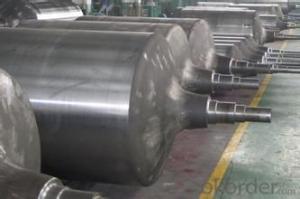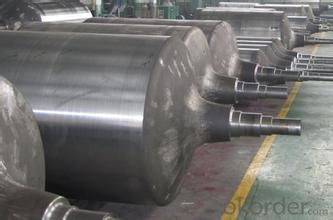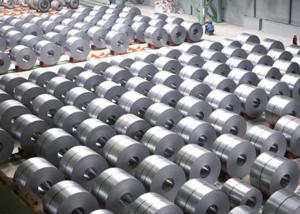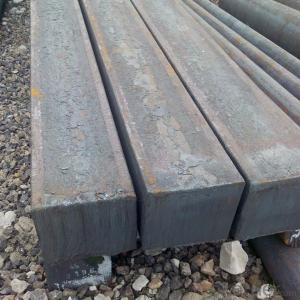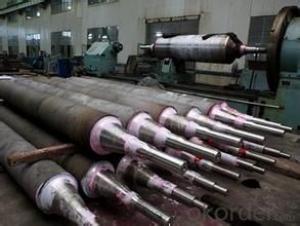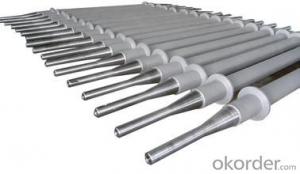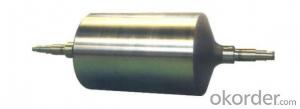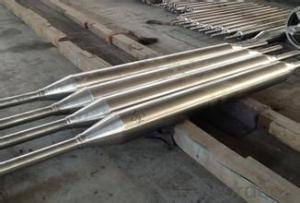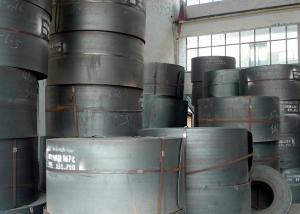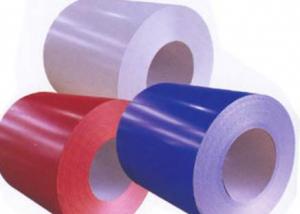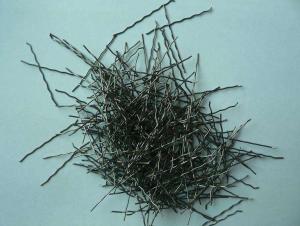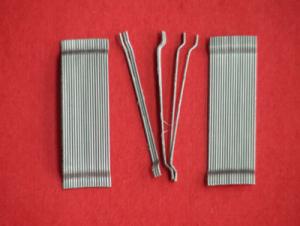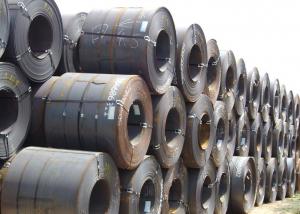Heat-resistant Furnace Roll for galvanizing line and annealing
- Loading Port:
- Tianjin
- Payment Terms:
- TT OR LC
- Min Order Qty:
- 1000 PCS
- Supply Capability:
- 10000 PCS/month
OKorder Service Pledge
OKorder Financial Service
You Might Also Like
Quick Details
| Condition: | New | Type: | Other | Usage: | Heat Treatment Furnace |
| Place of Origin: | Brand Name: | Weight: | Depend on size and materials | ||
| Certification: | ISO9001:2008;SGS | Warranty: | 12 months | After-sales Service Provided: | Engineers available to service machinery overseas |
| Certificate: | ISO9001:2008 | Application: | Continuous galvanizing line; Continuous annealing line | Technics: | Centrifugal casting |
| Standard: | ANSI, ASTM, ASME, DIN, GB | Material: | Stainless steel | Inspection: | Self-inspection or third party inspection |
| Advantage: | Complete in-house inspection facility to assure quality |
Packaging & Delivery
| Packaging Detail: | wooden package, Seaworthy package or as required |
| Delivery Detail: | according to contract |
Specifications
Furnace roll
1.Standard:ANSI, ASTM, ASME, DIN, GB
2.Certificate: ISO9001:2008
3.Size: according to drawing.
Product Description
Packaging & Shipping
Wooden case; Seaworthy package or according to requirements.
- Q: What are the applications of steel angles?
- Steel angles have a wide range of applications in various industries. They are commonly used in the construction industry for structural support, such as in building frames, bridges, and sign structures. Steel angles are also utilized in the manufacturing sector for machinery frames, equipment supports, and conveyor systems. Additionally, they find application in the automotive industry for chassis components, as well as in the furniture industry for manufacturing shelves and brackets. Overall, steel angles are versatile and essential components in many structural and manufacturing applications.
- Q: What are the different types of steel wire products?
- There are various types of steel wire products available in the market, including wire ropes, wire mesh, steel wire rods, steel wire strands, steel wire springs, steel wire nails, steel wire brushes, and steel wire cables.
- Q: How is steel used in the manufacturing of appliances?
- Steel is commonly used in the manufacturing of appliances due to its strength and durability. It is used to construct the outer casings and frames of appliances, providing structural support and protection. Additionally, steel is used for internal components such as heating elements, coils, and grills, where its heat resistance and conductivity are beneficial. Overall, steel plays a crucial role in ensuring the longevity and performance of appliances.
- Q: How do steel products contribute to the construction of theme-based botanical gardens?
- Steel products contribute to the construction of theme-based botanical gardens by providing the necessary structural support and durability. Steel beams and columns are used to create large and intricate structures such as greenhouse frames, walkways, and bridges, allowing for the creation of unique and aesthetically pleasing designs. Additionally, steel is resistant to corrosion and can withstand extreme weather conditions, ensuring the longevity of the botanical gardens.
- Q: How are steel products used in the construction of government buildings and administrative centers?
- Steel products are commonly used in the construction of government buildings and administrative centers due to their durability, strength, and versatility. Steel beams and columns provide structural support, ensuring the stability of the building. Steel roofing and cladding offer protection against external elements and enhance the building's energy efficiency. Additionally, steel is often used for doors, windows, and interior partitions, providing security and flexibility in design. Overall, steel products play a critical role in constructing government buildings and administrative centers by contributing to their longevity, safety, and functionality.
- Q: How is steel sheet metal coated for corrosion protection?
- Steel sheet metal is coated for corrosion protection through a process called galvanization. This involves immersing the sheet metal in a bath of molten zinc, which creates a protective layer on the surface of the steel. This zinc layer acts as a barrier, preventing oxygen and moisture from coming into direct contact with the steel and causing corrosion. Additionally, it provides sacrificial protection, meaning that if any small areas of the steel are exposed, the zinc will corrode first, sacrificing itself to protect the underlying steel. This coating method effectively extends the lifespan and durability of steel sheet metal in various applications.
- Q: How do steel products contribute to the construction of research laboratories and scientific facilities?
- Steel products play a crucial role in the construction of research laboratories and scientific facilities due to their strength, durability, and versatility. Steel is commonly used for framing structures, providing a strong and stable framework for the building. Additionally, steel is used in the fabrication of laboratory equipment, such as benches, cabinets, and storage units, ensuring the durability required for scientific experiments and research activities. Furthermore, steel is resistant to fire, corrosion, and pest infestation, making it a reliable choice for long-term use in these specialized facilities. Overall, steel products contribute to the construction of research laboratories and scientific facilities by providing the necessary structural support and ensuring the durability and safety of the building and its equipment.
- Q: How are steel bars used in the reinforcement of dams and reservoirs?
- Steel bars, also known as reinforcing bars or rebars, are commonly used in the reinforcement of dams and reservoirs. These bars are strategically placed and embedded within the concrete structure to enhance its strength and durability. By providing tensile strength, steel bars help prevent cracking and structural failure caused by extreme pressure or environmental factors such as water pressure and seismic activity. The steel bars also help to distribute and transfer loads evenly throughout the structure, ensuring its stability and longevity in the face of various external forces.
- Q: How is steel tubing used in the manufacturing of hydraulic cylinders?
- Steel tubing is commonly used in the manufacturing of hydraulic cylinders as it provides a strong and durable structure for fluid transfer and pressure containment. The tubing is formed into the desired shape and size, then welded or seamless to ensure a leak-free connection. It serves as the cylinder's main body, housing the piston and seals, and allows hydraulic fluid to flow smoothly, enabling efficient operation of the cylinder.
- Q: What are the safety precautions to be followed when handling steel products?
- When handling steel products, there are several safety precautions that should be followed. Firstly, it is important to wear appropriate personal protective equipment (PPE) such as gloves, safety glasses, and steel-toed boots to protect against cuts, abrasions, and impact injuries. Additionally, workers should be trained on proper lifting techniques to prevent strains and back injuries when handling heavy steel objects. It is crucial to maintain a clean and organized work area to prevent tripping hazards and to properly store steel products to prevent them from falling or causing injuries. Finally, regular inspections and maintenance of equipment and tools should be conducted to ensure they are in proper working condition, reducing the risk of accidents.
Send your message to us
Heat-resistant Furnace Roll for galvanizing line and annealing
- Loading Port:
- Tianjin
- Payment Terms:
- TT OR LC
- Min Order Qty:
- 1000 PCS
- Supply Capability:
- 10000 PCS/month
OKorder Service Pledge
OKorder Financial Service
Similar products
Hot products
Hot Searches
Related keywords
